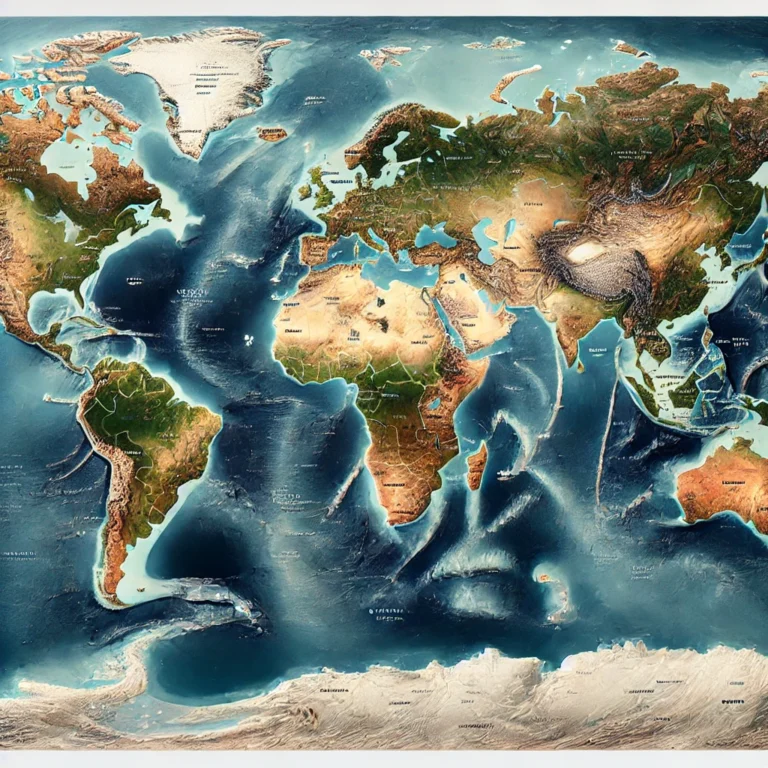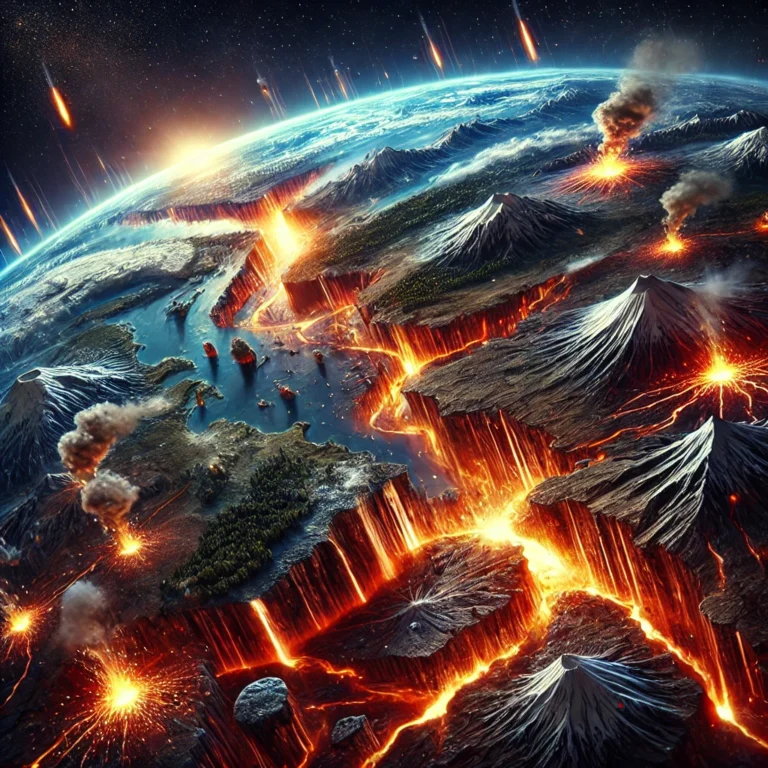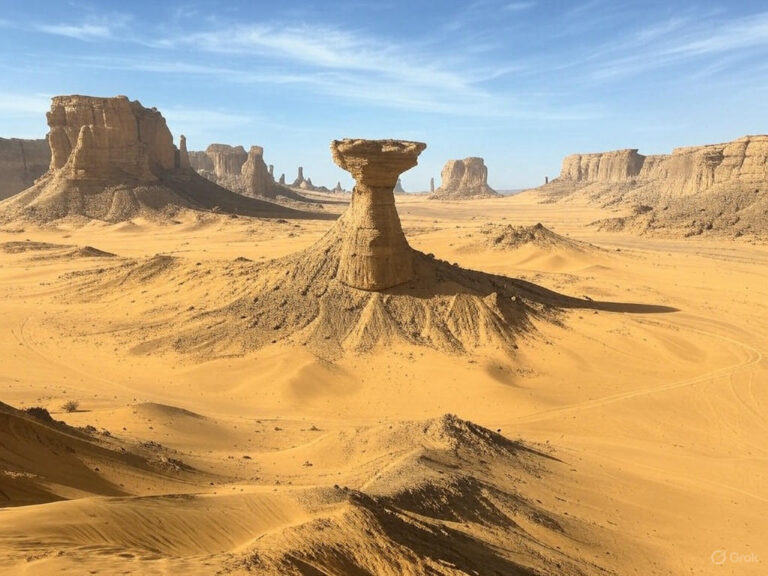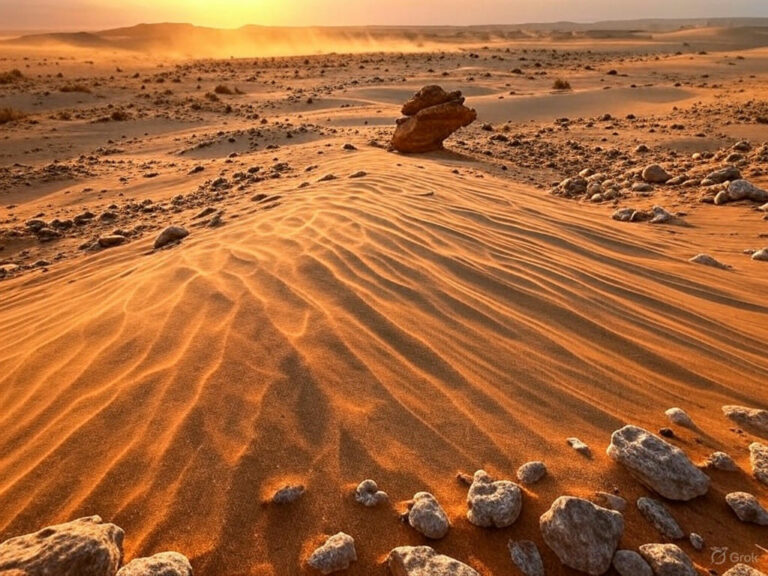Geomorphic Processes and Climatic Controls: How Climate Shapes the Earth
Let’s start this topic by thinking of three different landscapes: first, a dense tropical rainforest where the air is thick with humidity and the ground is rich with deep, weathered soil. Next, a vast desert, where the sun beats down on bare rocks, and the land is sculpted by the relentless wind. Finally, a high-altitude mountain range, where snow-covered slopes and frozen peaks are carved by ice and avalanches.
Each of these landscapes is a result of different geomorphic processes acting under the influence of climate. The way rocks break down, rivers carve valleys, and landslides occur depends largely on temperature, humidity, and precipitation, which vary from region to region.
Let’s break down how these climatic factors control geomorphic processes in different parts of the world.
1. Climate Dictates the Type and Intensity of Geomorphic Processes
Just like a chef needs the right combination of ingredients to create a dish, nature requires temperature and humidity to determine how landforms evolve.
🔹 In the humid tropics (e.g., Amazon Basin, Western Ghats, Southeast Asia)
- High rainfall + high temperature → Deep chemical weathering (rock breakdown due to water reactions).
- Dense vegetation stabilizes slopes, reducing soil erosion and slowing down valley widening.
- More rainfall interception → Less surface runoff → Lower erosion rates.
🔹 In arid and semi-arid regions (e.g., Sahara Desert, Thar Desert)
- Low humidity + high temperature fluctuations → Physical weathering (thermal expansion & contraction) dominates.
- Sparse vegetation → More sheet wash, wind erosion, and rapid landscape changes.
- Limited chemical weathering → Limestone and other rocks remain relatively resistant.
🔹 In temperate mid-latitudes (e.g., Europe, North America, Himalayas)
- Seasonal variations lead to a mix of mechanical and chemical weathering.
- Higher rainfall than deserts but lower than tropics → Moderate fluvial erosion.
🔹 In glacial & high-altitude regions (e.g., Antarctica, Alps, Himalayas)
- Cold temperatures → Dominance of freeze-thaw weathering (water entering cracks, freezing, expanding, and breaking rock).
- Glacial erosion sculpts U-shaped valleys, fjords, and sharp ridges.
Thus, temperature and humidity are the two key climatic variables that dictate the speed, type, and intensity of geomorphic processes in any region.
2. The Role of Vegetation in Modifying Erosion and Runoff
🌱 Dense vegetation acts as a protective shield for the land.
- In humid tropical regions, thick forest cover stabilizes slopes, preventing landslides, soil creep, and excessive surface erosion.
- Trees intercept rainwater, reducing direct impact on the soil and controlling surface runoff.
- In contrast, arid regions with sparse vegetation experience severe wind and water erosion. Without roots to hold the soil, even small rain showers can wash away large amounts of sediment.
💡 Example: The Amazon rainforest has rich, deep soils because of slow erosion rates, while the Sahara desert has shifting sand dunes because of high wind erosion and little vegetation to hold the sand in place.
3. The Influence of Humidity on Mass Movements and Erosion
💧 Too much moisture can destabilize slopes, while too little moisture can slow down certain processes.
🔹 Humid regions (e.g., Western Ghats, Northeast India)
- High humidity = increased landslides, slumping, and soil creep.
- Water saturates the soil, reducing friction and causing mass movement of land.
🔹 Arid regions (e.g., Rajasthan, Sahara, Atacama)
- Soil creep is almost absent due to lack of moisture.
- Flash floods become the main agent of erosion, causing sudden landform changes.
🌍 Real-World Example: The heavy monsoon rains in Uttarakhand trigger frequent landslides, while in Ladakh, with low rainfall, the main erosional force is wind.
4. How Different Rocks Respond to Different Climates
⛰️ The same rock can behave differently in different climates.
✅ Limestone in humid vs. arid climates
- In humid climates (e.g., Meghalaya, Southeast Asia) → Limestone undergoes intense chemical weathering, forming caves, sinkholes, and underground rivers (karst topography).
- In arid climates (e.g., Egypt, Rajasthan) → Without much water, limestone remains relatively resistant to weathering.
✅ Granite in different climates
- In humid areas → Gradually breaks down due to hydrolysis (chemical reaction with water).
- In deserts → Cracks due to repeated expansion and contraction from temperature fluctuations.
💡 Key Takeaway: Different rock types respond uniquely to temperature and moisture levels, shaping the landforms we see today.
5. Spatial Variation of Climatic Controls within a Single Region
Even within a single climatic region, local variations like altitude, slope direction, and precipitation patterns influence geomorphic processes.
🔹 Effect of Altitude & Slope Orientation
- In the Himalayas, the south-facing slopes receive more sunlight, leading to more melting and erosion, while the north-facing slopes remain covered in snow longer, experiencing less weathering.
- In valleys, rainfall patterns vary, leading to different rates of river erosion and sediment transport.
💡 Example: In the Alps, the southern slopes have more vegetation due to greater exposure to sunlight, whereas the northern slopes remain colder and barren.
Conclusion
Climate is like the director of a grand geological drama, deciding which processes take center stage in different regions.
🌿 Humid tropics → Deep chemical weathering, stabilized slopes, slow erosion.
🏜️ Arid regions → Physical weathering, high wind erosion, rapid landscape change.
⛰️ High-altitude regions → Freeze-thaw weathering, glacial erosion, slow soil formation.
🌍 Temperate regions → Moderate combination of chemical and physical weathering.
Understanding these climatic controls helps us predict environmental changes, manage natural hazards, and plan sustainable development.






